The solo trip backpacking in Mongolia lasted a month, nights in tents and in the desert and often guests of the locals who, as is well known, are hospitable and open-minded to the traveler, and about this adventure lasting a month, I want to tell and introduce you to a world under many points of view unexplored and, from my point of view, yet to be discovered.
There are, in fact, not many people who talk about this splendid country and especially in a few who dare to travel in its interior, notoriously difficult and that, like so many other destinations in the world not yet covered by mass tourism, it can be discovered independently provided you have the exact time and a strong ability to adapt.
Mongolia is not a very touristic country, even if the data are on the rise, thanks to its vast and boundless territory and the many unspoilt corners that are beginning to whet the fantasies of travelers who wish to go beyond the now conventional travel and the usual beaten tracks.
A country ideal for those in search of a bit of adventure and who love nature.
This is five times larger than Italy and has a population fifty times lower than ours. It is sufficient to say that Italy's population density amounts to 190 inhabitants per square kilometer, while in Mongolia it is only 1.3.
The morphological and especially meteorological characteristics make it very difficult for settlements on Mongolian territory. A great part of its population, roughly 46%, is concentrated in the capital Ulaanbaatar, the rest of the country is virtually uninhabited or otherwise populated by nomads.
The consequences of all this are perceived also on the social level that presents us with not exactly happy statistics: the infant mortality rate reaches the 60 per thousand (compared with the 8 in Italy), the illiterate are nearly 20 percent.
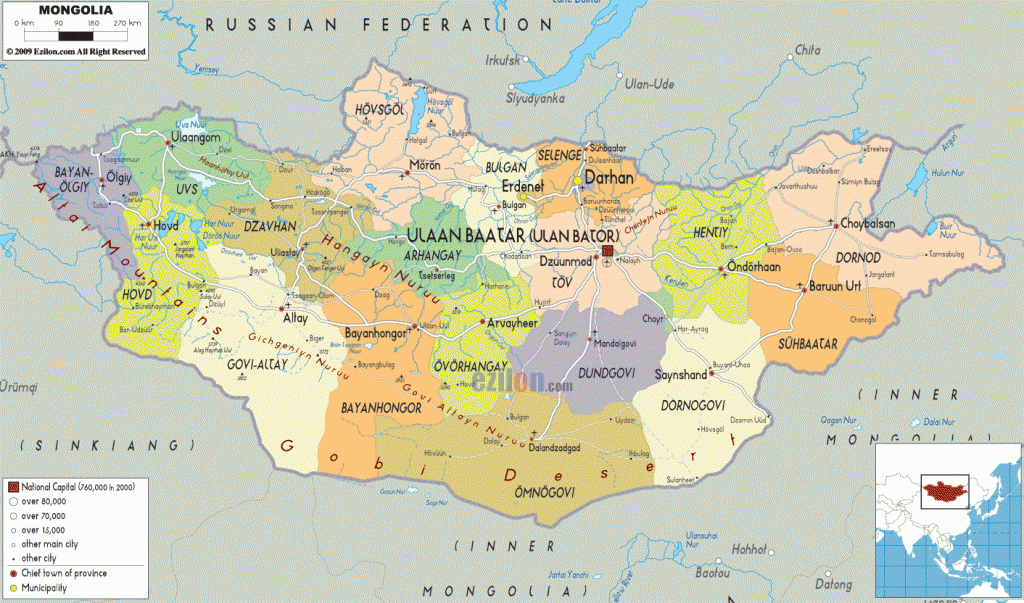
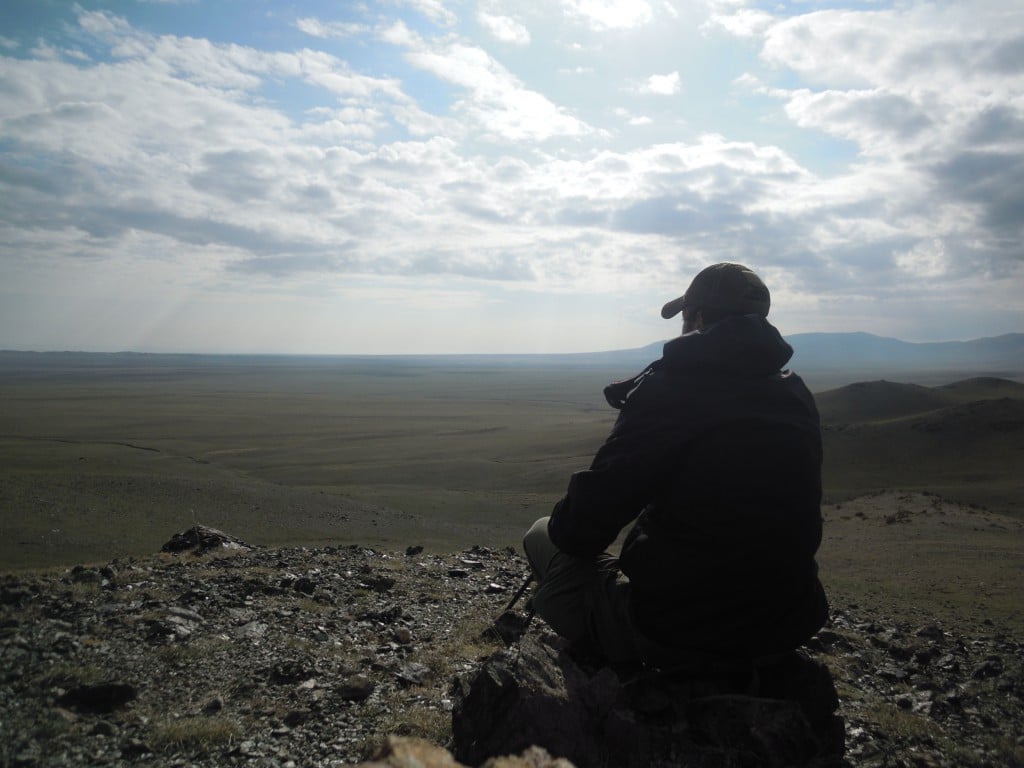
Sandwiched between Russia and China, Mongolia has four distinct geographical areas : to the west the Altai mountains (where the extraordinary Snow Leopard lives), to the north the territory of Taiga, with big lakes and coniferous forests (wolves, bears, foxes, deer, wild boars, sables are found here), from the center to the east stretch the steppes (ubiquitous marmots and various ungulates) and the region of the highlands, to the south the Gobi desert (characterized by the presence of camels and wild horses).
When talking about Mongolia, it is to associate immediately everything to a great hero, or better, to a great warrior and strategist, Genghis Khan (1162 - 1227), who created the largest empire of history. In fact, I think being a nomad is one of the legacies of Genghis Khan and a very nice thing of the Mongols is the fact that they appreciate the Backpacker.
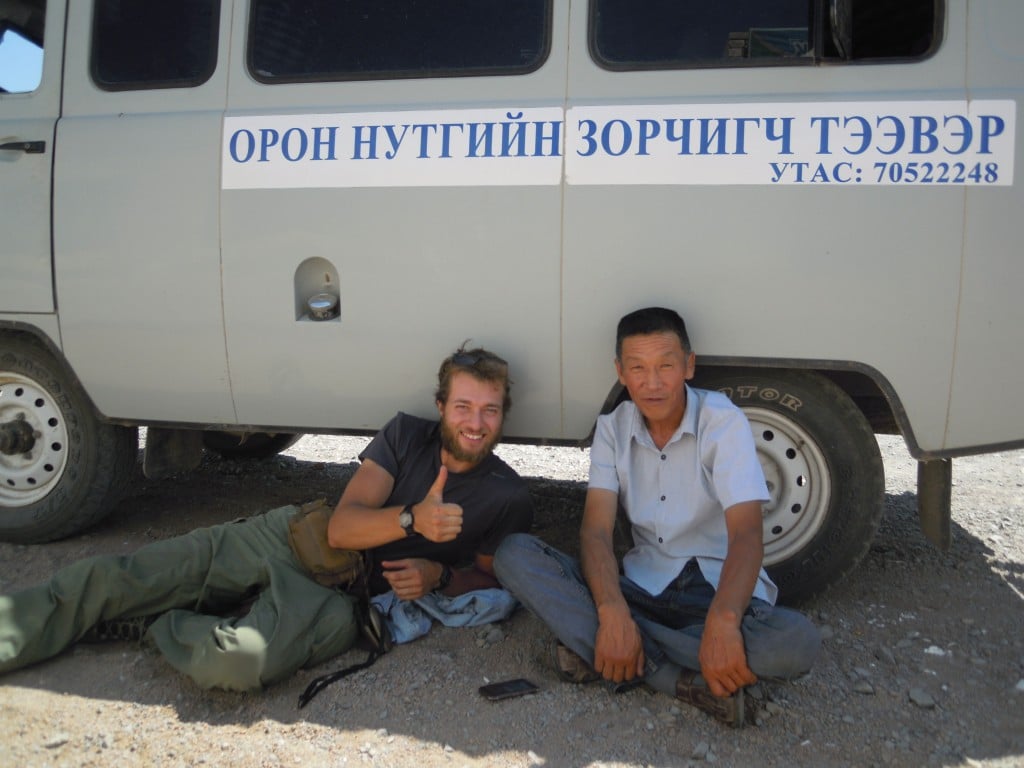
It is quite a safe country, but my advice is always to remain vigilant as I was, personally, a victim of a pickpocket, that had conditioned, for a few hours, my stay in Ulaanbaatar. In the capital it is better not to walk in dark alleys or, at night, advisable to take a taxi back. I repeat, be aware of pickpockets in the markets too, on buses and in tourist areas.
The Naran Tuul market as well as being a good market to make purchases of counterfeit products at good prices, is also an excellent ground for the pickpockets. Certainly one of the more widespread problems in the capital is alcoholism, so if you happen to come across Drunks, give them a wide berth, they are not dangerous but chieflyly annoying.
From a health point of view it does not present huge risks but certainly it will take you a few days or maybe a few weeks to ensure that your organism gets used to the food, on a basis of fermented milk. There is no obligation to any vaccination, but check that the usual vaccinations (diphtheria, tetanus, polio) are up to date. In addition, get the vaccinations against hepatitis A and B and rabies done. You may be asked an HIV test for stays longer than a month.
Avoid drinking unboiled water. Buy bottles of mineral water wherever possible, or as a last resource equip yourselves with tablets for water purification (like Micropur Forte).
I want to conclude by telling you that if you're looking for adventure, love nature and maybe even a little bit of risk, Mongolia is the place made for you. If you are then used to travel with the trolley it is better to close in the closet this senseless 4-wheel suitcase and make purchase of a backpack of minimum 50 Lt.
All equipment must therefore, be on the basis of the itinerary before departure and before any eventual purchases, make a thorough search for info on the 21 Provinces /Ajmag Mongol and obviously carefully choose the season to go in as the capital Ulaanbaatar is one of coldest metropolis in the world. So to travel in Mongolia between June and August I think, can be the best compromise for having the opportunity to explore any area without any problems from the North to the South.

The transport infrastructure is quite underdeveloped and this will certainly not help you on your trip. It has about 1800 km of railways and less than 2000 km of asphalted roads. The only railway line through Mongolia from north to south allows to reach Irkutsk in Siberia, or Beijing in China; it is a non electric line. Arm yourself with patience and a spirit of adventure because you will need a lot. The bus is the cheapest means of transport (with a cost that is always less than $ 10) but it certainly is the slowest and the most uncomfortable.
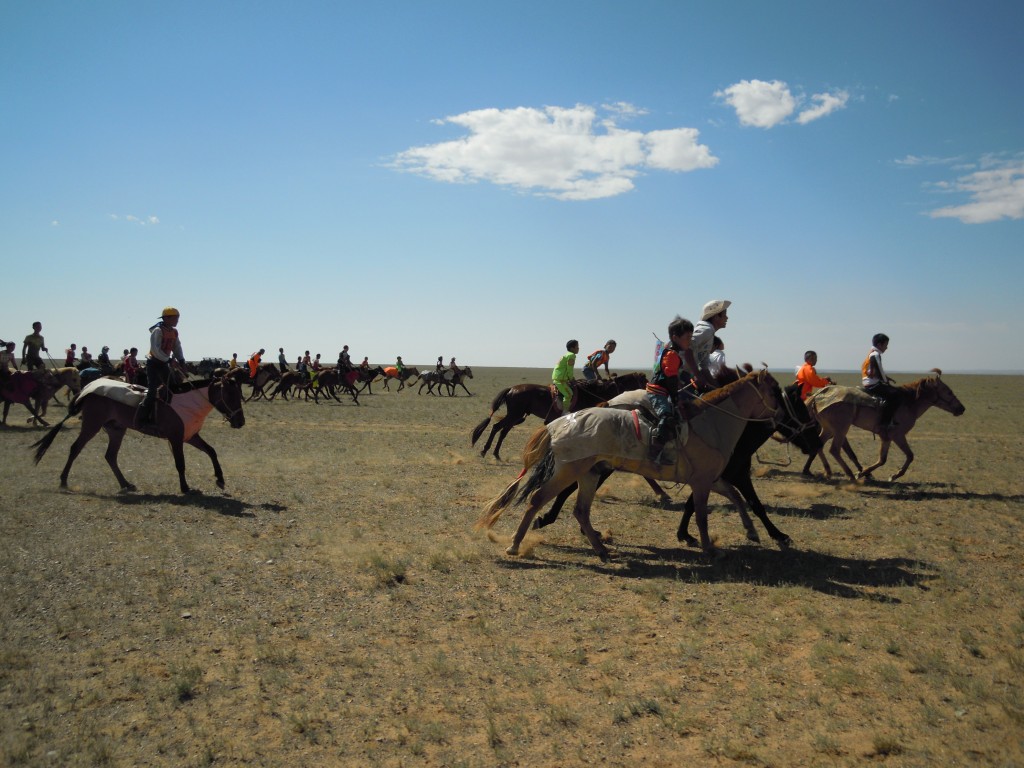
We should always go through Ulaanbaatar since all the villages and cities scattered around Mongolia has as reference point the capital. Faster and more comfortable than the buses are the Russian jeeps and the collective minibusses, that carry out shuttle services between Ulaanbaatar and the provinces of the center and to other tourist localities.
They leave only when they are full, that is, crammed. It will be hard to know their exact destination because everything is written in Cyrillic.
There is also the possibility of "renting" a car with a driver (often one of the jeeps or minibus used for public transport), but do not ever leave without ensuring that the price also includes the driver's expenses.
Certainly renting a jeep in Ulaanbaatar, in my opinion, is the best thing to do since almost every village has a petrol station; in case you encounter difficulties with refueling, to equip yourself with fuel canisters, they can always come in useful!!
Certainly do not expect a Bus in Gobi, because the only thing that you can hope for a lift is a nomadic family that is moving to return to their villages. Strange but true, having an extension of well 5 times that of Italy, there are also several airports from where you can take domestic flights by the national Mongolian company, the Miat Mongolian Airlines.
Good question! Having spent almost half of my journey into the Gobi, to meet someone certainly is more unique than rare. I can assure you that of backpackers there was not even the slightest shadow but the locals did their best to make me feel at home. The Mongolian population is famous for its hospitality and I certainly can confirm that myself. Certainly, in tourist areas it is more than normal the presence of the backpacker.
Often they are Europeans or Americans stressed out from office work, looking for a bit of adventure. Daring and adventurous I can tell you to have encountered them at the Chinese while trying desperately to get to Khovd (City west of UB), the Seban Family (French family on the road by now for six months in Asia in search of a new life), the German cyclist or the French guys who were traveling with bikes and boats .

Perhaps sleep is the least of your problems. Widespread in the big cities are hostels and guest houses at very acceptable prices (From 5 to $ 10 for a more than decent accommodation). But if you have plans to travel backpack on shoulder, arm yourself with a tent because it will be your trump card to impress the population of the place that at times will invite you to sleep in their Gher. (The Mongolian dwelling par excellence).
In 30 days of Mongolia I slept more than 15 nights in the tent and I can tell you that it was an unforgettable experience. I forgot, for the more demanding tourists, there are also private Gher Camp at costs ranging from $ 30 up.
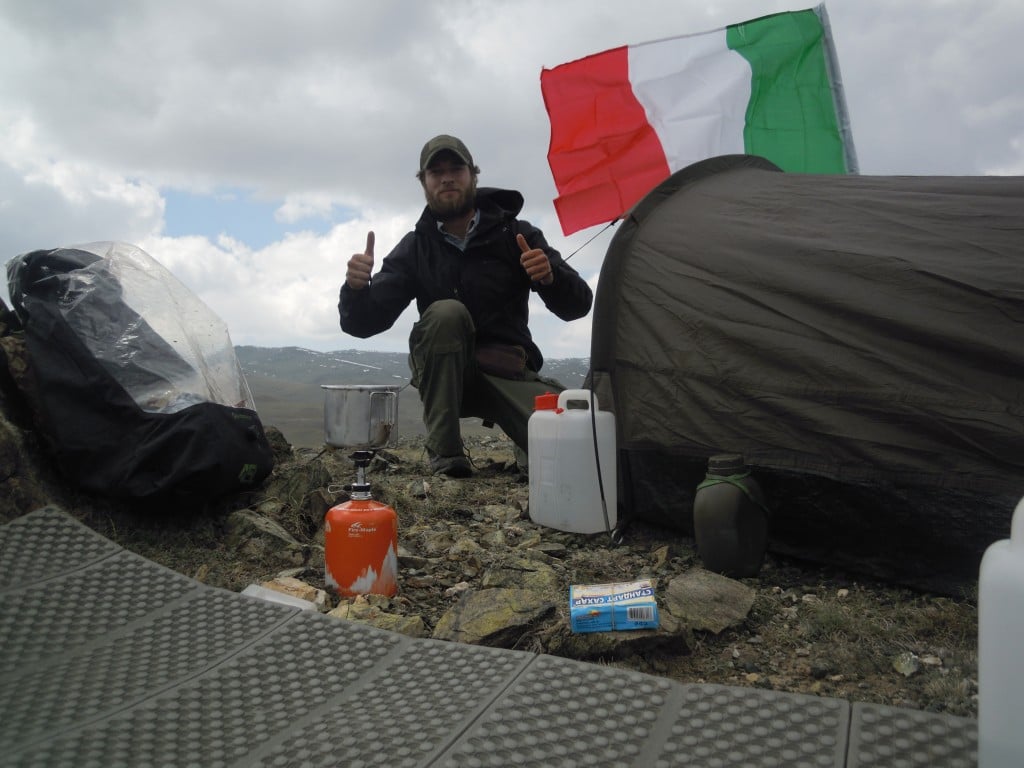
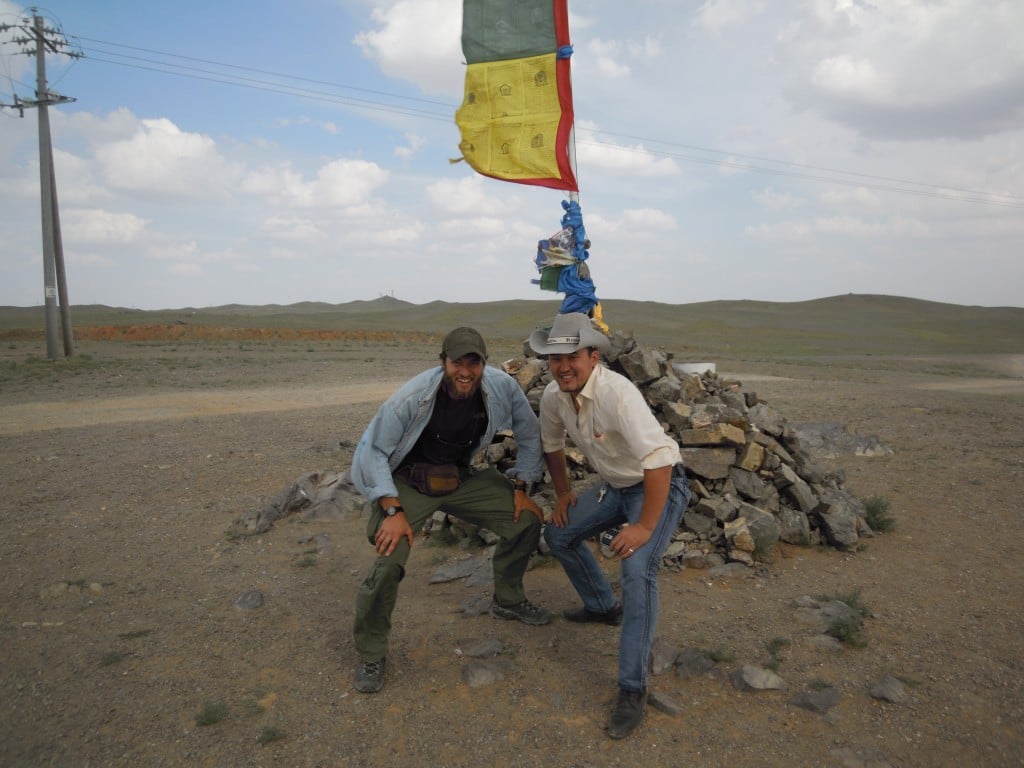
My motto reads "NEVER STOP EXPLORING " and from my work I have learned a lot of things, but the most important is the one that you just have to believe in yourself to be able to accomplish anything, a backpacking trip in Mongolia, even though not one of the easiest tackled, has been done and many lessons have been to organize.
It certainly is not a country that everyone can visit independently but for the tourist who decides to dare this trip I think that to organize whatever you want there will not be a problem as long as you know that you have to adapt in many situations, if you want to save, and that it is necessary to dedicate a rather long time.
Not being a dangerous country I just want to make you some recommendations which I think are good to follow.
For those who have time and want to try the Trans-Siberian this could be an option, but of course it takes time and they must be fascinated by the idea of spending long days on the train. Departure is from Moscow and the journey ends in Beijing, in China.
Not being a country of great touristic interest the information about it are few. Sifting through the net I managed to find a lot of information .
The readings that I recommend are: [easyazon_link identifier="3100494156" locale="US" nw="y" nf="y" tag="viaggiarelowc-21" cart="n" cloak="y" localize="y" popups="n"]Gobi of R. Messner[/easyazon_link] and [easyazon_link identifier="1742202993" locale="US" nw="y" nf="y" tag="viaggiarelowc-21" cart="n" cloak="y" localize="y" popups="n"]Lonely Planet Mongolia[/easyazon_link] (Travel Guide)
that have helped me a lot in the planning of this trip.
Of vital importance were the Russian topographic maps scale 1 : 500,000 of the Gobi area.
I did not find the [easyazon_link identifier="B00SCSTX7I" locale="US" nw="y" nf="y" tag="viaggiarelowc-21" cart="n" cloak="y" localize="y" popups="n"]Mongolia Lonely Planet[/easyazon_link] travel guide interesting and impeccable, but in the absence of material nothing is to be left to chance, and it was still a great help to start planning the trip and to help me sort out transport.
Disclaimer: In questo post, alcuni dei link forniti sono link di affiliazione, il che significa che posso guadagnare una commissione se si effettua un acquisto attraverso questi collegamenti. Tuttavia, ciò non comporta nessun costo aggiuntivo per te. Le commissioni che ricevo attraverso questi link di affiliazione aiutano a finanziare e supportare il mio blog, mantenendo così la sua indipendenza e la mancanza di sponsorizzazioni. Mi sforzo sempre di fornirti le migliori informazioni e consigli possibili, basati sulla mia esperienza e ricerca personale. Mi preme sottolineare che il tuo sostegno è fondamentale per mantenere vivo questo blog e continuare a fornirti contenuti di qualità. Grazie per il tuo supporto!
Alcune immagini pubblicate sono state tratte da Internet, nel caso in cui, il loro utilizzo, violasse diritti d’autore, mandateci una mail a [email protected] e verranno immediatamente rimosse.
Hi ,
What about the language, does the people there speak English ? Let me know I am planning to head there in next summer.
Thanks,
Neha
Hello, do you know if it‘s possible to rent a car withoit a driver?
hello would like to talk to you some more please I'm a 40 years old first time traveller going on my own I have children so can not go for months so would like to make the most of time I have thank you Sandra
Hello Sandra,
feel free to make any question here and I will be happy to answer, the answers can help other readers! Are you planning to travel to Mongolia soon?
Hello Giulia,
I am planning to travel Mongolia soon and would appreciate if you can give some tips/recommendations.
Thanks and regards,
B